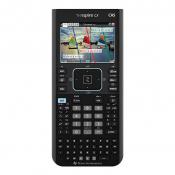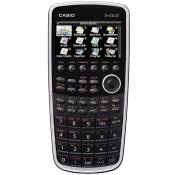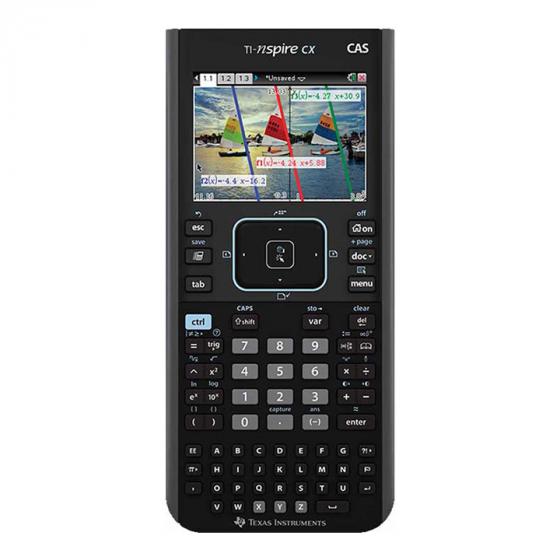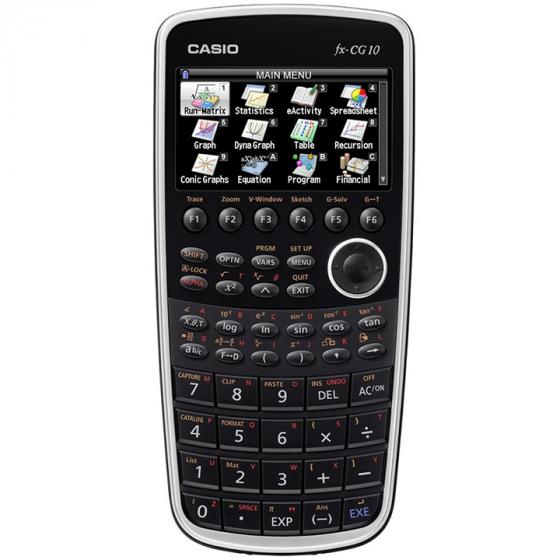Product Comparison: Texas Instruments TI-Nspire CX CAS vs Casio fx-CG10 PRIZM
This site is a free online resource that strives to offer helpful content and comparison features to its visitors. Please be advised that the operator of this site accepts advertising compensation from certain companies that appear on the site, and such compensation impacts the location and order in which the companies (and/or their products) are presented, and in some cases may also impact the scoring that is assigned to them. The scoring that appears on this site is determined by the site operator in its sole discretion, and should NOT be relied upon for accuracy purposes. In fact, Company/product listings on this page DO NOT imply endorsement by the site operator. Except as expressly set forth in our Terms of Use, all representations and warranties regarding the information presented on this page are disclaimed. The information which appears on this site is subject to change at any time. More info








- Great size and weight.
- The calculator is thin for its class, and very light weight.
- Very light weight but not to the point that it feels fragile.
- On the other hand, the TI-N is about the same size as the TI-89, maybe a cm wider and taller. It is thinner and it weights a bit less.
- The device isn't weighted very well - it is top-heavy which makes it feel as if it will slip out of your hand.
- It is actually very lightweight for it's size. I know some are put off by it's size but I think it's perfect as the button spacing and responsiveness is spot on.
- Big keypad. Not a lot of people might see this very useful but due to the large keypad, I hardly make any typos when I input numbers and variables.
- The buttons are a joy - large and comfortable.
- First, the keys are large. You can press the keys and have full confidence that the right one will register. I really like the way Casio made the keyboard for this model.
- The display makes typing long equations easy. The trackpad works well, and even has an option to tap to click instead of having to push the button.
- The color display and shading make vector calculus much easier to understand and explain.
- The color display is great if you vision is not what is used to be.
- The calculator also has a beautiful color display that can be used for a number of graphing situations, including 3-dimensional plots.
- Display failed before the 1 year warranty was up. TI says it's physically damaged (dropped, excessive pressure, got wet, etc) and therefore is not covered.
- So instead of paying 75 for the 9860GII, I paid 70 for this one!! A color graphing calculator with an excellent display!
- The color display is wonderful for telling different functions apart. Though I would highly recommend downloading Eigenmath from Cemetech, it's very useful if you're taking a calculus course or a calculus based course.
- I love the backlit display! I wish the keyboard was also lit, but compared to other graphing calculators, the screen is so nice and easy to read, you'd have to break my fingers to pry this thing away from me.
- I absolutely love this calculator, it's easy to navigate, long lasting battery life and very practical color display.
- Display quality. Display isn't bad, but it is not the best. Pictures might appear a bit grainy.




- This calculator is great! In my life, I will never learn the features of this calculator to its full extent. If you need something done, this calculator can do it. I personally like the built in battery.
- I also have a TI-84 Plus CE, and the Nspire CX CAS has so many more features that I could never be without it again. That said, it's not so robust that I'm ready to give up my TI-84 Plus CE yet.
- The included software has all the features of the actual calculator.
- The buttons click easier, it's faster, and has a ton more features. It also comes with a code for the student software.
- My only complaint is that it is rather difficult to learn how to use all of it's features (not that the product is difficult to use once you know how however).
- Battery life is actually better than I expected coming from a TI-84 running on AAA batteries that lasted a few months at a time.
- The battery life is great, I am still running on the original batteries that it came with (Although it is just about dead), but a year of battery life, that's pretty good considering that I use it for an hour on weekdays.
- Then there is also the fact that this calculator uses standard batteries rather than a rechargeable battery pack like the newer updated Ti-84. However the Prizm does support the use of rechargeable individual Ni-MH batteries if you really want to use rechargeable batteries.
- Removable batteries and a battery indicator. It doesn't use any proprietary batteries, so you can replace those AAAs with little hassle. The indicator also lets you know when your batteries are getting low.
- If you are a civil engineering student, I would recommend the Prism CG-10 (or 20) calculator for most applications. The only exception is if you are going deep in to structural matrix analysis, FEM or you are doing a masters in a high level math subject, in that case you may prefer to buy an HP 50g.
- The one thing that I don't like is that it really uses them batteries. It's worth it, to buy more expensive non-lithium batteries (if you want an accurate battery readout).
- This is not a calculator for those of you who actually use math in a practical application. Save yourself the headache and disbelief, and get the TI-89, you'll thank yourself when you go to program an equation into it.
Price History
Popular Comparisons
















